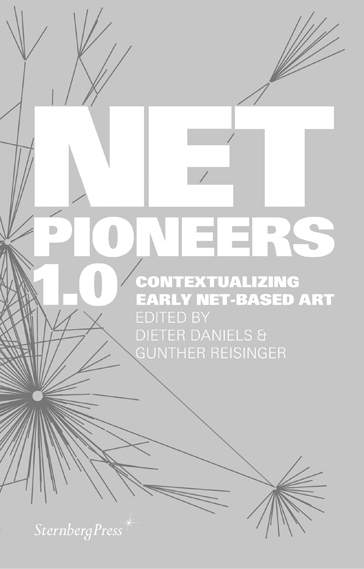Mel Alexenberg: Future of Art in a Digital Age: From Hellenistic to Hebraic Consciousness (2006)
Filed under book | Tags: · art, art criticism, art history, visual culture

“This book develops the thesis that the transition from pre-modernism to postmodernism in art of the digital age represents a paradigm shift from the Hellenistic to the Hebraic roots of Western culture.
Semiotic and morphological analysis of art and visual culture demonstrate the contemporary confluence between the deep structure of Hebraic consciousness and new directions in art that arise along the interface between scientific inquiry, digital technologies, and multicultural expressions.
Complementing these two analytic methodologies, alternative methodologies of kabbalah and halakhah provide postmodern methods for extending into digital age art forms. Exemplary artworks are described in the text and illustrated with photographs.”
Publisher Intellect Books, 2006
ISBN 1841502065, 9781841502069
187 pages
PDF (updated on 2021-1-22)
Comments (2)Audiovisual Thinking journal, No. 1: What is Academic Video? (2010)
Filed under journal | Tags: · audiovisual, communication, media, online video, video

Audiovisual Thinking is the world’s first journal of academic videos about audiovisuality, communication and media. The journal is a pioneering forum where academics and educators can articulate, conceptualize and disseminate their research about audiovisuality and audiovisual culture through the medium of video.
International in scope and multidisciplinary in approach, the purpose of Audiovisual Thinking is to develop and promote academic thinking in and about all aspects of audiovisuality and audiovisual culture.
Advised by a board of leading academics and thinkers in the fields of audiovisuality, communication and the media, the journal seeks to set the standard for academic audiovisual essays now and in the future.
Audiovisual Thinking. The Journal of Academic Videos
Contact: Inge Ejbye Sørensen, University of Copenhagen
Editorial board: Thommy Eriksson, Oranit Klein Shagrir, Inge Sørensen, Petri Kola, Sanna Marttila
Advisory board: Ib Bondebjerg, John Thornton Caldwell, Lily Díaz
View online (fixed on 2012-7-28)
Comment (0)Dieter Daniels, Gunther Reisinger (eds.): Net Pioneers 1.0: Contextualizing Early Net-Based Art (2010)
Filed under book | Tags: · 1990s, art history, art theory, internet, internet art, media art, net art, network society, new media art

“Net Pioneers 1.0 discusses media art history with a new, interdisciplinary look at the historical, social, and economic dynamics of our contemporary, networked society.
The hype around Net-based art began in the early 1990s, before the Internet had become a commodity. It developed in skeptical parallel to the rise and decline of the new economy. But why does this chapter of art history appear to end so suddenly? Is it that the idea of Net-based art involving itself in a revolutionary spirit in a networked society failed? One might equally well argue that it was far too successful simply to become another media-art genre. Looking today at the social, aesthetic, and conceptual approaches of the early 1990s presented in this book, it is clear that most of them have in fact come true, if in ways other than intended.
The contributions cover a wide variety of topics, ranging from art-scholarly methodological debate (Bentkowska-Kafel, Kuni), source-critical analysis (Reisinger), archiving, exhibition, and analytical practice (Ernst, London, Paul, Sakrowski) to media-philosophical aspects (Ries) and technical and artistic innovations (Daniels).”
Contributions by Anna Bentkofska-Kafel, Dieter Daniels, Wolfgang Ernst, Verena Kuni, Barbara London, Christiane Paul, Gunther Reisinger, Marc Ries, Robert Sakrowski and Julian Stallabrass.
Publisher Sternberg Press, Berlin and New York, February 2010
Co-published with the Ludwig Boltzmann Institute Media.Art.Research
ISBN 978-1-933128-71-9
240 pages
Publisher
Co-publisher (archived)
PDF (index missing; updated on 2018-11-27)
PDFs

